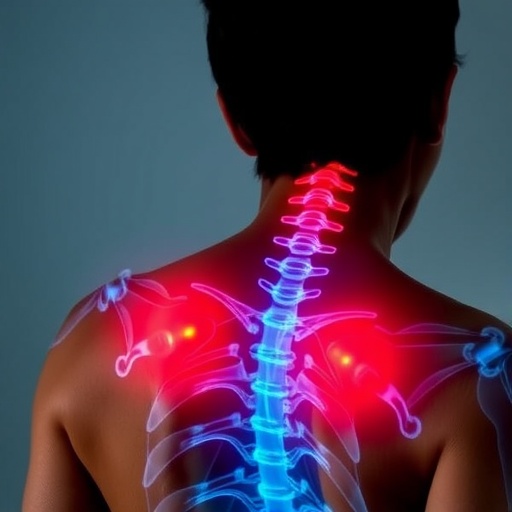Chronic back pain is not merely an uncomfortable or inconvenient ailment; emerging research reveals it may serve as a significant harbinger for a spectrum of other debilitating health conditions. Recent investigations have highlighted a pronounced correlation between chronic back pain and increased incidence rates of non-communicable diseases, including cardiovascular disease, arthritis, diabetes, depression, and even certain cancers. These findings challenge the traditional siloed approach to managing back pain, demanding a paradigm shift towards integrative and comprehensive healthcare frameworks.
Chronic back pain undeniably stands as one of the leading causes of disability globally. Its pervasive impact extends beyond individual suffering, placing tremendous strain on healthcare infrastructures and economic systems worldwide. Millions of individuals find themselves incapacitated, ensnared by persistent discomfort that disrupts fundamental activities such as sitting, standing, or obtaining restful sleep. This pervasive disability compromises productivity and quality of life, creating cascading socioeconomic repercussions.
In a groundbreaking population-based study published in the Brazilian Journal of Physical Therapy, an international consortium of researchers examined data from the 2019 National Health Survey in Brazil. Spanning nearly 90,000 subjects, the survey offered an unprecedented opportunity to evaluate the prevalence of chronic back pain alongside its comorbidities in a middle-income country. The findings notably mirrored patterns observed in wealthier nations, underscoring the global significance of the association between chronic back pain and multiple chronic diseases.
The research demonstrated that individuals experiencing chronic back pain exhibited markedly higher rates of cardiovascular disease, arthritis, and clinical depression. Specifically, persons with back pain were 17% more likely to report cardiovascular illness, 15% more prone to arthritis, and 12% more inclined toward depression compared to their pain-free counterparts. Such statistics illuminate a distressing intersection of musculoskeletal pain with systemic health challenges, suggesting shared pathophysiological or lifestyle-related risk factors.
Beyond these top three comorbidities, the study also uncovered elevated occurrences of diabetes, cancer, asthma, and other pulmonary conditions among those afflicted with chronic back pain. These convergences highlight the multifaceted burden borne by this population and raise critical questions about the underlying mechanisms that connect musculoskeletal disorders with widespread metabolic and inflammatory pathologies.
The prevalence of chronic back pain and its associated comorbidities in Australia further testifies to its magnitude as a public health concern. Approximately four million Australians suffer from back problems, with nearly 75% of these individuals aged over 45 having at least one concurrent chronic condition. This co-occurrence invariably amplifies the severity of activity limitations, particularly when arthritis, depression, or cardiovascular disease coexist with back pain, thereby severely diminishing functional independence.
Activity limitation, a key outcome measure, captures the extent to which chronic conditions impair an individual’s capacity to engage in everyday tasks. The study found that adults contending simultaneously with back pain and arthritis were more than twice as likely to experience significant restrictions in daily activities than those without this coexisting condition. This synergy of impairments underscores the critical importance of diagnosing and managing comorbid states to prevent compounding disability.
Dr. Rafael Zambelli Pinto, lead researcher and physiotherapist from the University of Technology Sydney, emphasized the intricate interplay between these conditions. He noted that while causality remains to be elucidated, a constellation of shared risk factors—such as sedentary lifestyles, obesity, psychological stress, and poor sleep quality—likely fuels the co-occurrence of back pain alongside other non-communicable diseases. Addressing these modifiable factors represents a promising avenue for mitigating the overall burden.
The study’s implications extend beyond epidemiological insights; they carry profound clinical relevance. The frequently narrow focus on pain management in treating chronic back pain may inadvertently overlook the broader systemic health challenges patients endure. Recognizing chronic back pain as a marker of multisystem disease necessitates integrated, interdisciplinary treatment strategies that concurrently target pain relief, comorbidity management, and lifestyle modification.
Clinicians are urged to adopt holistic care models incorporating diverse healthcare professionals—including physiotherapists, mental health specialists, cardiologists, and endocrinologists—to tailor personalized treatment regimens. Comprehensive care pathways designed to screen for and address associated non-communicable diseases can mitigate cumulative functional decline, optimize quality of life, and curtail healthcare utilization costs.
Moreover, health policy stakeholders should prioritize research and resource allocation towards integrated management frameworks. Enhancing public health initiatives that promote physical activity, weight management, stress reduction, and sleep hygiene may serve as crucial preventive strategies. Educational campaigns aimed at raising awareness about the interconnectedness of back pain and systemic health conditions could foster earlier intervention and improved patient outcomes.
This pioneering study conducted across a middle-income country setting reinforces that the phenomenon is not confined to affluent populations but is universally relevant. Its substantial sample size, rigorous methodology, and collaborative international effort lend robustness and generalizability to the findings. Importantly, the absence of conflict of interest declarations underscores the impartiality of the research conclusions.
In conclusion, chronic back pain emerges not just as a localized musculoskeletal disorder but as an integrated marker of broader non-communicable disease burden. The intricate relationships between back pain and conditions such as cardiovascular disease, arthritis, and depression necessitate reimagined approaches in both clinical practice and public health. Addressing these interconnected health challenges through comprehensive, interdisciplinary care will be paramount in reducing the growing societal impacts of chronic pain and multimorbidity.
Subject of Research: People
Article Title: Prevalence of non-communicable diseases, multimorbidity, and their impact on activity limitations among adults with chronic back pain: a national population-based study in a middle-income country
News Publication Date: 5-Aug-2025
Web References: Brazilian Journal of Physical Therapy Journal Article
Keywords: chronic back pain, non-communicable diseases, multimorbidity, cardiovascular disease, arthritis, depression, activity limitation, interdisciplinary care, population health, epidemiology




